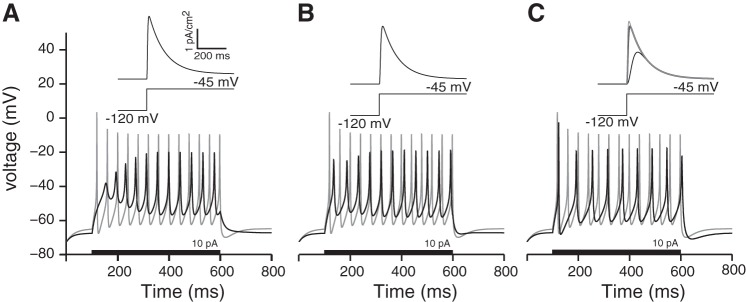Fig. A3.
Effect of rapidly inactivating potassium currents on sustained spiking. In A–C, the firing pattern of the baseline sustained-spiking model (gray line; gNa = 13 mS/cm2, gKL = 0 mS/cm2) is compared with the firing pattern after addition of a rapidly inactivating conductance (black line; gKLA = 1.1 mS/cm2). Firing patterns are shown in response to a 10-pA current step. Three versions of gKLA were modeled, each with fast, moderate, and slow activation kinetics (A, B, and C, respectively; see insets for representative voltage-clamp responses). A: when gKLA had rapid activation and inactivation, the beginning of the spike train was suppressed to create an overall “buildup-and-fire” response pattern. B: responses had shorter buildup times when the activation kinetics were slower. C: for the slowest activation kinetics, the response does not have a notable buildup time. In this case the presence of gKLA also slowed the overall spike rate. As the activation kinetics of gKLA slowed down, the net low-voltage-gated current became smaller because the current did not fully activate before rapid inactivation began (comparison of 3 currents in voltage clamp is shown in C, inset).

